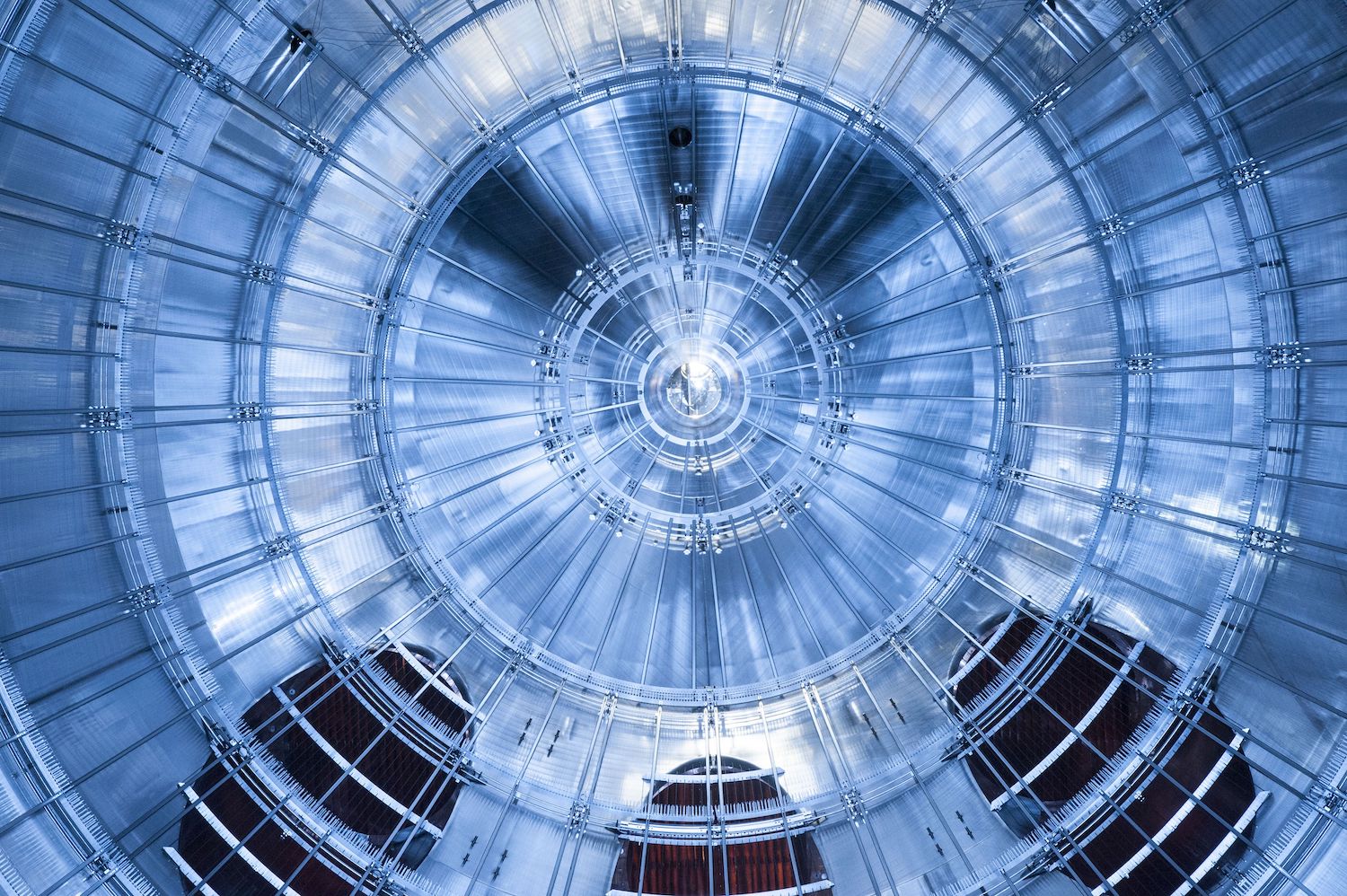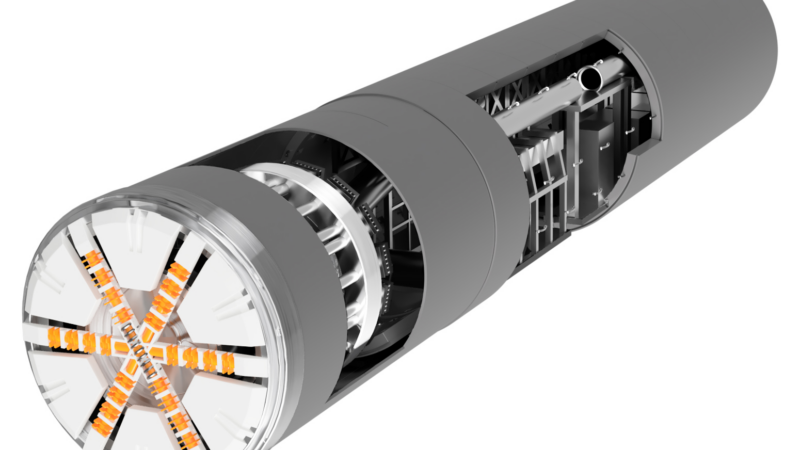Neutrinovoltaic Technology and other advancements are coming closer
Neutrinos are referred to as „ghost particles“ because of their exceedingly low mass. With remarkable precision, physicists have discovered a new upper limit for the mass of neutrinos. The mass of a neutrino is often referred to as „black zero“ by politicians. The mass of these atoms is negligible. The possibility that electrically uncharged neutrinos may be massless was not ruled out until 2001.
Researchers from Queens University in Canada and the Tokyo Institute of Technology, however, were able to demonstrate that neutrinos do in fact have a mass. In recognition of their groundbreaking work, they were bestowed with the 2015 Nobel Prize in Physics. The precise mass of the neutrino has not yet been determined. To now, scientists have only been able to establish an upper limit for the mass. Scientists, on the other hand, are working to narrow down the neutrino’s mass as exactly as possible since it is critical to the development of theoretical physics and the answer to many basic issues.
Mass of neutrinos
The journal „Nature Physics,“ published by scientists from the Karlsruhe Institute of Technology (KIT), has just published a substantial improvement in the measurement of neutrino mass. They were able to reduce the upper limit of the neutrino mass from 1.1 eV to 0.8 eV using their experiment „Katrin.“
The acronym eV stands for „electron volt“ and is a physical measure of energy, not „registered association“ as some would assume. A physicist’s use of a unit for energy to describe the neutrino’s mass may annoy some people. However, Einstein’s theory E = mc2 allows mass to be transformed to energy (and the other way around), therefore the eV may also be used as a unit of mass.
500,000 times as bright as an electron
To show how light a neutrino is, compare it to the mass of an electron, which is also a very light particle. The mass of an electron is 511,000 eV. Therefore, neutrinos are more than 500,000 times smaller than electrons. That’s an astonishingly light weight.
However, why is it so critical for scientists to conduct complex tests to narrow down the range of neutrino masses? As far as particles with mass go, neutrinos make up the majority of the universe’s mass. Astronomy and particle physics use them extensively. There is a good chance that they might be a contender for the enigmatic dark matter.
During the Big Bang, neutrinos were generated in massive quantities. Physicists might learn more about the formation of the cosmos if they had a precise idea of their mass. The large-scale architecture of the cosmos may also be better understood using neutrinos.
The ability to weigh up to 200 tons
In 2018, “ Katrin“ went into service. The 70-meter-long and 200-ton-strong experimental equipment serves as a kind of neutrinos‘ scale.
To begin, a tritium source is used to create the neutrinos that will be analyzed. Tritium is a radioactive hydrogen that decays and emits electrons and neutrinos. The disintegration of these releases 18,600 eV of energy. The „Katrin“ spectrometer can accurately detect how much of this energy is devoted to electrons.
The neutrino mass can be properly measured only in Karlsruhe, Germany. „Katrin“ was also used to calculate the previously valid upper limit on neutrino mass. How come „Katrin“ could now provide a more exact result than in the initial measurements following commissioning?…
Experiments will be carried out until the end of 2024
Christian Weinheimer, a co-speaker with „Katrin“ team, says that „the decrease of the interfering sounds and the rise in the signal rate were key for the current outcome.“.
The top limit on the mass of neutrinos may be lowered much more in the years to come. „We are constantly creating and implementing enhancements to further decrease the perturbation event rate,“ add the „Katrin“ researchers, „to realize the full potential of this unique experiment.“ There are plans to continue working with the facility until the end of 2024.
Wolfgang Pauli, a theoretical physicist, predicted the existence of neutrinos. It was written in 1930: „I’ve committed a heinous crime. I believe I have discovered a particle that is undetectable.“ He was correct in asserting the existence of neutrinos. His assumption that these particles couldn’t be detected was incorrect.
More Neutrino Experiments
As of recently, the so-called „Particles known as „ghostly particles“ have gained more prominence in the scientific community. For their detection, huge detectors had been set up around the world. The IceCube Neutrino Observatory for example, covers one cubic kilometer near the South Pole. The instrument covers a square kilometer of the surface and extends down to 4,920 feet (1,500 meters) deep. It is the first gigaton neutrino detector ever built. But In the last 2 years, detectors of neutrinos have become smaller and more efficient.
Lately, Scientists have spotted the scattering effect of Neutrinos not with giant detectors weighing thousands of tons, but with devices the size of a milk jugs. The advance is opening the way to portable neutrino detectors that could monitor nuclear facilities and, for example, sniff out neutrinos created in the production of plutonium.
The Neutrino Energy Group, An international team of scientists, led by Holger Thorsten Schubart in Germany, found a much more practical use of „passing-by-neutrinos“. Their experiments goal is to confront the current energy dilemma by using the kinetic energy of neutrinos and converting it in to reliable and off-grid energy.
The Neutrinovoltaic technique is based on layers of silicon and carbon that are surgically put to a metallic substrate in order to produce a resonance when neutrinos and other invisible radiation impact them. It was discovered by Neutrino Energy how to design a cell that could transform the appropriate degree of resonance into a resonant frequency on an electrical conductor, and then harvest this energy.
A crucial advantage compared to photovoltaic technology is that the process requires no sunlight. For 24 hours a day and 365 days a year, Neutrinovoltaic can transform portions of energy into power, anywhere in the world.
The new technology may help future generations meet their energy needs without requiring inefficient infrastructure, competition for scarce natural resources and environmental burden, which requires immediate action to stop it from becoming a climate catastrophe.
The Neutrino Energy Group cooperates with a worldwide team of scientists and various international research centers, which deal with application research, the conversion of invisible radiation spectra of the sun, among other things, such as neutrinos (high-energy particles, which ceaselessly reach the earth) in electric power.
Company-Contact
Neutrino Deutschland GmbH
Holger Thorsten Schubart
Unter den Linden 21
10117 Berlin
Phone: +49 30 20924013
E-Mail: web@neutrino-energy.com
Url: https://neutrino-energy.com
Press
Pressekontakt Heiko Schulze
Heiko Schulze
Haus der Bundespressekonferenz 0413
10117 Berlin
Phone: +49 30 726262700
Fax: +49 30 726262701
E-Mail: heiko.schulze.bpk@gmail.com
Url: http://www.neutrino-energy.com
Bildquelle: @Markus Breig, KIT







